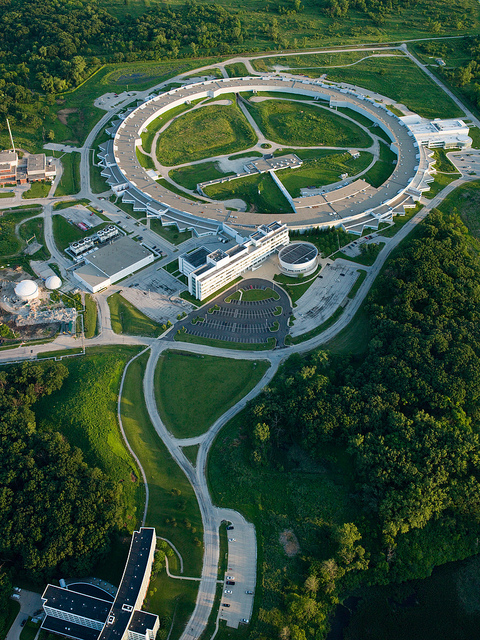
ARGONNE, Ill. – Nuclear engineer Meimei Li of the U.S. Department of Energy’s (DOE) Argonne National Laboratory has received a Presidential Early Career Award for Scientists and Engineers (PECASE) for her contributions to the understanding of nuclear reactor materials.
Li’s research focuses on structural materials for nuclear reactors.
“My research seeks to understand the behavior of materials in reactor environments and to develop high-performance materials that can be used in a wide range of nuclear energy systems,” she said.
“The impressive achievements of these early-stage scientists and engineers are promising indicators of even greater successes ahead,” President Obama said. “We are grateful for their commitment to generating the scientific and technical advancements that will ensure America’s global leadership for many years to come.”
Li has worked at Argonne since 2008, but her experience with nuclear material science research predates her time at the laboratory.
“I studied materials science in college, and I’ve worked on similar questions ever since,” she said.
At Argonne, Li’s research has mostly focused on materials for sodium-cooled fast reactors and very high temperature reactors, which are the next generation of nuclear reactors under development by DOE.
“We want to use modern material science characterization and modeling tools to develop new materials that outperform traditional ones in the extreme irradiation, temperature, and corrosive environments in next-generation nuclear reactors,” she said.
In her time at the laboratory, Li has been able to use the intense X-rays provided by the laboratory’s Advanced Photon Source and resources provided by the Electron Microscopy Center to probe the structure of the materials she studies from the atomic to mesoscale. The eventual goal of the research, she said, involves studying the dynamics of microstructural evolution in these materials in situ – in other words, in the kinds of extreme conditions they would experience within a nuclear reactor.
The study of nuclear materials is an interdisciplinary effort.
“There’s very little any one individual can do, and though I’m extremely honored to receive this award the very nature of our research program involves a great deal of collaboration and teamwork, and the recognition should be shared by all the people I have worked with,” she said.
The awards, established by President Clinton in 1996, are coordinated by the Office of Science and Technology Policy within the Executive Office of the President. Awardees are selected for their pursuit of innovative research at the frontiers of science and technology and their commitment to community service as demonstrated through scientific leadership, public education, or community outreach.
Before coming to Argonne, Li had previously worked at the China Institute of Atomic Energy, the University of Illinois at Urbana-Champaign, Oak Ridge National Laboratory, and Risø National Laboratory in Denmark. She received her Ph.D. degree from the University of Illinois in 2003.
Argonne National Laboratory seeks solutions to pressing national problems in science and technology. The nation’s first national laboratory, Argonne conducts leading-edge basic and applied scientific research in virtually every scientific discipline. Argonne researchers work closely with researchers from hundreds of companies, universities, and federal, state and municipal agencies to help them solve their specific problems, advance America’s scientific leadership and prepare the nation for a better future. With employees from more than 60 nations, Argonne is managed by UChicago Argonne, LLC for the U.S. Department of Energy’s Office of Science.
The Advanced Photon Source at Argonne National Laboratory is one of five national synchrotron radiation light sources supported by the U.S. Department of Energy’s Office of Science to carry out applied and basic research to understand, predict, and ultimately control matter and energy at the electronic, atomic, and molecular levels, provide the foundations for new energy technologies, and support DOE missions in energy, environment, and national security. To learn more about the Office of Science X-ray user facilities, visit the Office of Science website.
